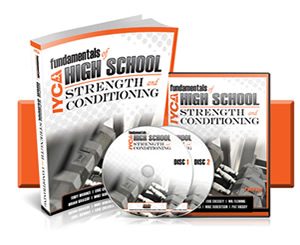 Unilateral exercises, or single-leg squat variations, are beneficial for a variety of reasons including that they require stability, they have the potential to eliminate imbalances, and they can help create awareness of weaknesses. The single-leg squat has been utilized commonly in knee rehabilitation settings such as with individuals experiencing patellar tendinitis or going through a return-to-play protocol with knee surgeries. Considering the stress that sport has upon the knees themselves, implementing exercises that stress the knee joint is imperative when preparing the body for these demands. The single-leg squat is a great way to strengthen not only the larger muscles of the leg but also all of the stabilizing muscles of the hips due to the nature of the unilateral exercise.
Unilateral exercises, or single-leg squat variations, are beneficial for a variety of reasons including that they require stability, they have the potential to eliminate imbalances, and they can help create awareness of weaknesses. The single-leg squat has been utilized commonly in knee rehabilitation settings such as with individuals experiencing patellar tendinitis or going through a return-to-play protocol with knee surgeries. Considering the stress that sport has upon the knees themselves, implementing exercises that stress the knee joint is imperative when preparing the body for these demands. The single-leg squat is a great way to strengthen not only the larger muscles of the leg but also all of the stabilizing muscles of the hips due to the nature of the unilateral exercise.
Though there are many benefits of the single-leg squat, they can be fairly difficult exercises to perform. Here are some ways to progress and strengthen the single-leg squat movement pattern:
Important things to note:
Some of the variations in the video emphasize the eccentric portion of the single-leg squat. At first, many athletes struggle to perform the concentric portion of these exercises, so performing the lowering portion will help build the strength necessary to eventually control the full range of motion. Focusing on the eccentric portion of the exercise is beneficial not only to strengthening the muscle fibers but it creates tension on the tendon structure of the knee joint itself. Challenge the eccentric portion with time under tension spending around 3-5 seconds on the descent during the exercise vs focusing on the concentric portion. Athletes will still reap the benefits of utilizing the variation and will eventually increase their strength to a great enough degree to perform full range of motion repetitions.
If utilizing a longer eccentric time, perform around 4-8 repetitions on each leg for 3-4 sets.
If focusing on a normal tempo, utilizing higher repetitions (8-10) may be more appropriate. Determining the repetition ranges will depend on the athlete’s ability or what phase of training they are in.
You can also perform the single-leg squat variation in multiple planes using a variation of the Y-balance test:
Performing these movements can be done utilizing sliders or standing on a single leg and tapping the toe to each of the same positions. You can challenge this position by having the balancing leg on a foam pad to add more of an ankle stability component.
Since the Y-balance test holds validity in assessing an athlete’s limb-to-limb symmetry, adding these movements into a warm-up may also prepare the body for all the different planes associated with many sports.
Utilize these single-leg squat variations in conjunction with other exercises, including bi-lateral squats, to create well-rounded programming that addresses many needs.
 Jordan Tingman – CSCS*, USAW L1, ACE CPT, CFL1 is a graduate of Washington State University with a B.S. in Sports Science with a Minor in Strength and Conditioning. She completed internships with the strength & conditioning programs at both Washington State University and Ohio State University, as well as a Graduate Assistantship in S & C at Eastern Washington University. Jordan is a competitive Olympic weightlifter and is currently training athletes of all ages near her home in Seattle, WA.
Jordan Tingman – CSCS*, USAW L1, ACE CPT, CFL1 is a graduate of Washington State University with a B.S. in Sports Science with a Minor in Strength and Conditioning. She completed internships with the strength & conditioning programs at both Washington State University and Ohio State University, as well as a Graduate Assistantship in S & C at Eastern Washington University. Jordan is a competitive Olympic weightlifter and is currently training athletes of all ages near her home in Seattle, WA.
The IYCA High School Strength & Conditioning Specialist is the only certification created specifically for coaches training high school athletes, and it has recently been updated!. The course includes several hours of video instruction (including a complete Olympic lifting instructor course) and two textbooks with contributions from some of the top strength and conditioning coaches in America. Click on the image below to learn more about how to become a certified high school strength & conditioning coach.

